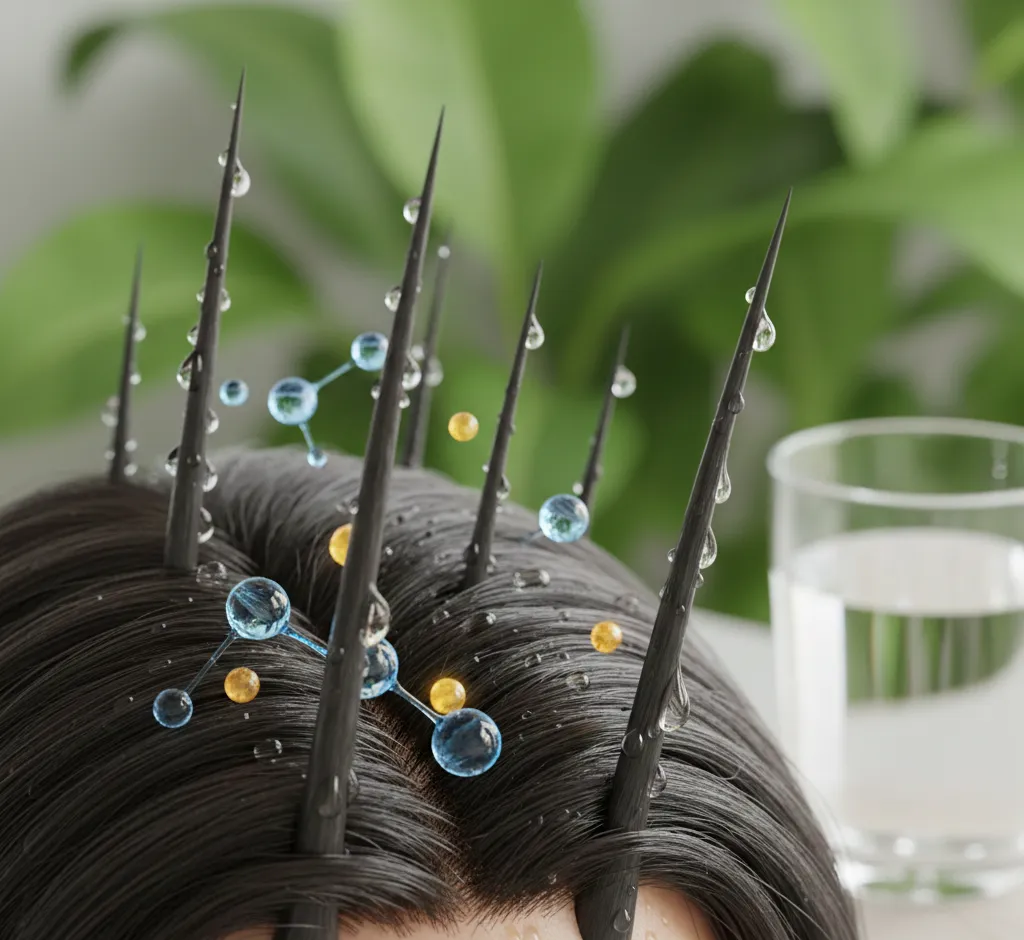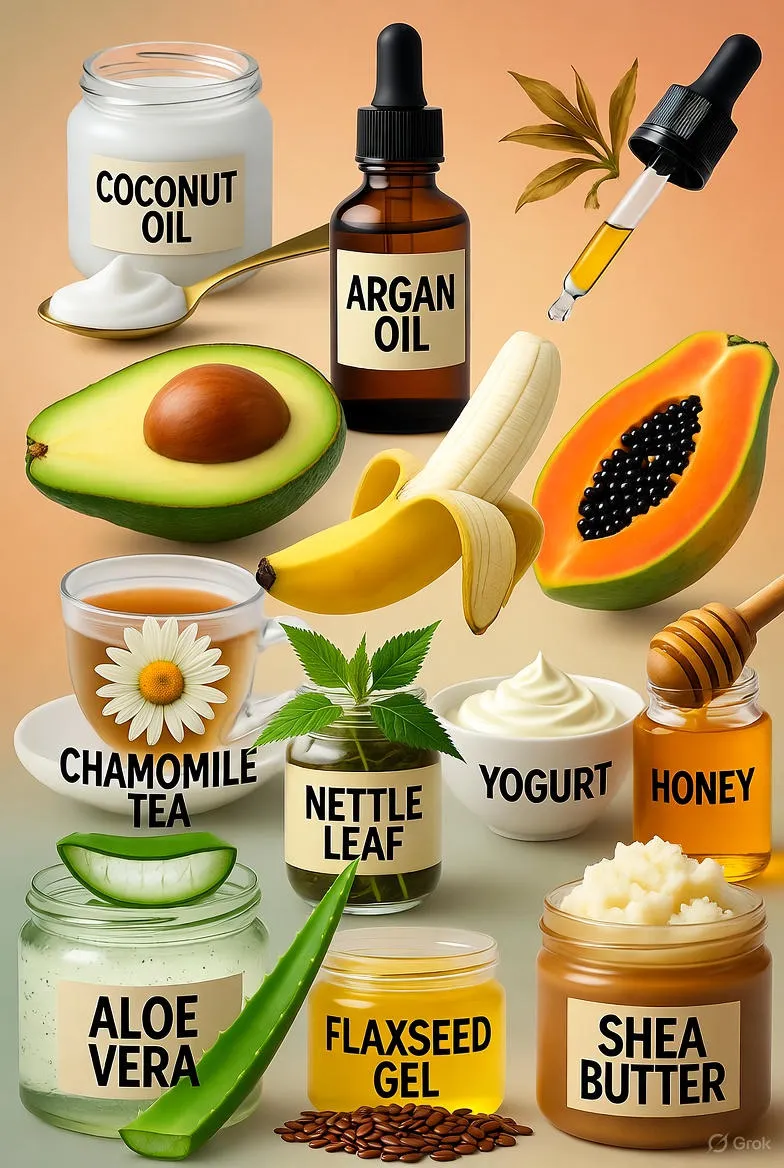The Essential Role of Hydration in Boosting Hair Growth and Optimizing Scalp Health
Discover the scientific connection between proper internal hydration, topical moisture, and a healthy hair growth cycle. Learn expert tips, product ingredients, and lifestyle changes for stronger, shinier hair and a balanced scalp.

The Essential Role of Hydration in Boosting Hair Growth and Optimizing Scalp Health
In the quest for long, strong, and lustrous hair, we often focus on external treatments: the latest strengthening shampoos, expensive serums, and deep conditioning masks. While these topical products are undoubtedly important, the fundamental truth about hair health begins not in a bottle, but with a foundational element: **water**.
Hydration, both internal (what you drink) and external (what you apply), is a non-negotiable component of a thriving hair growth cycle and a balanced scalp. Dehydration, in contrast, can turn the luxurious environment of your scalp into a barren landscape, leading to brittle strands, increased shedding, and chronic irritation. This comprehensive guide delves into the science of why hydration is the cornerstone of healthy hair, offering actionable strategies to transform your hair from the inside out.
The Scientific Foundation: Water, Keratin, and the Hair Shaft
To understand the importance of hydration, it helps to understand the structure of the hair itself. A single strand of hair is a complex biological structure, and water is a vital part of its composition.
- The Hair Composition: Hair is primarily composed of the protein **keratin**, but a significant portion—up to 25% of a hair strand's weight—is water.
- Maintaining Integrity: This internal water content is what gives hair its **elasticity**, **flexibility**, and **resilience**. When hair is adequately hydrated, the protective outer layer, the cuticle, lies flat and smooth. This smooth surface reflects light, which is why hydrated hair looks **shiny** and healthy.
- The Dehydration Effect: When the hair's water content drops, the structural integrity is compromised. The cuticle lifts, creating a rough texture that leads to **frizz** and makes the hair prone to damage. The strands become dry, brittle, and susceptible to breakage and split ends, giving the appearance of thinning hair.
Achieving optimal hair health requires a dual approach:
- Internal Hydration: Drinking enough water to support the blood circulation and nutrient delivery system.
- External Hydration: Using products that deliver water (humectants) and lock it in (emollients/occlusives) to the scalp and hair shaft.
Part I: The Crucial Link Between Internal Hydration and Hair Growth
The scalp is essentially an extension of the skin on your body, and the hair follicles are tiny organs that require a constant, well-supplied flow of nutrients to function. This supply chain is entirely dependent on water.
1. Nutrient and Oxygen Delivery
Water is the primary component of blood. When you are properly hydrated, your blood volume is optimal, and its consistency allows for efficient circulation. This is crucial for the hair growth cycle:
- Fueling the Follicle: The hair follicle is where the magic happens—it’s the root of the hair. For hair cells to be produced and for the hair to enter and stay in the active growth (anagen) phase, the follicle requires a steady stream of **vitamins, minerals (like Iron and Zinc), and oxygen**.
- The Dehydration Blockade: Chronic dehydration leads to thicker blood and slower circulation. This deprives the hair follicles of the necessary building blocks and energy. This nutritional deficit can prematurely push the hair follicle into the resting (telogen) phase, causing increased shedding and stalled growth.
2. The Role in Cell Regeneration and Detoxification
Healthy hair growth relies on the rapid and constant regeneration of cells within the hair follicle. Water facilitates this process by:
- Supporting Synthesis: Water is essential for the synthesis of key structural components like **collagen**, which surrounds and protects the hair follicle.
- Flushing Out Toxins: Proper hydration helps the body's natural detoxification processes. Water acts as a solvent to flush metabolic waste and toxins. If toxins accumulate, they can create an unhealthy microenvironment around the follicle, potentially impairing its function and slowing down hair regeneration.
3. The Gut-Hair Axis and Hydration
Emerging research highlights the connection between gut health and hair vitality. The body's ability to absorb vital hair-boosting nutrients (like B vitamins, iron, and zinc) is dependent on a healthy digestive system. **Hydration supports digestive health and nutrient absorption** by ensuring the smooth functioning of the gut, which in turn ensures that the hair follicles receive the resources they need to thrive.
How to Optimize Internal Hydration:
- Consistent Water Intake: Sip water consistently throughout the day, rather than drinking large amounts at once, to maintain a steady hydration level. Monitor your urine color—pale yellow is generally the goal.
- Water-Rich Foods: Supplement your water intake with foods high in water content and essential minerals, such as cucumbers, watermelon, berries, celery, and leafy greens.
- Limit Dehydrating Agents: Reduce consumption of excessive caffeine, alcohol, and sugary drinks, as these can be diuretics, leading to fluid loss.
Part II: External Hydration for Scalp Health and Strand Strength
While drinking water fuels the follicle, topical hydration is necessary to protect the hair fiber and the surface of the scalp from the damaging effects of the environment, heat, and friction.
1. Creating an Optimal Scalp Microenvironment
The scalp is the soil from which hair grows, and its condition is paramount. A well-hydrated scalp:
- Prevents Dryness and Flaking: A dehydrated scalp can lead to flakiness, tightness, and chronic itching. This irritation can be a breeding ground for inflammation, which has been shown to disrupt the hair growth cycle.
- Regulates Sebum Production: Paradoxically, a dry scalp can sometimes overcompensate by producing *excess* sebum, leading to an oily yet still flaky condition. Maintaining balance with a moisturizing, non-stripping routine helps regulate the scalp's natural hydrolipidic film (the protective barrier of oil and water).
- Reduces Oxidative Stress: Research suggests that an unhealthy scalp microenvironment is linked to increased oxidative stress, which can negatively impact pre-emergent hair fiber quality and retention. Properly cared-for, hydrated skin on the scalp is better equipped to defend against this damage.
2. Ingredients for Superior Topical Hydration
To ensure your hair and scalp retain moisture, look for products that contain a balance of three key types of ingredients:
A. Humectants (Attract Water)
These ingredients draw moisture from the air or from deeper layers of the scalp/hair and bind it to the outer layers of the hair shaft and skin.
- Hyaluronic Acid: A powerful humectant that can hold up to 1,000 times its weight in water, often formulated in scalp serums for deep, sustained moisture.
- Glycerin: A common and highly effective humectant that penetrates the hair and scalp to draw in and hold water.
- Aloe Vera and Panthenol (Pro-Vitamin B5): Excellent hydrators that also offer soothing and reparative benefits to the scalp.
B. Emollients (Smooth and Soften)
These ingredients fill the gaps in the damaged cuticle, providing a soft texture and helping to prevent water loss.
- Natural Oils: Jojoba, Argan, and Coconut oil penetrate the hair shaft to moisturize from within and help smooth the cuticle.
- Ceramides: Lipids that are naturally found in the hair cuticle and help repair the barrier, preventing moisture from escaping.
C. Occlusives (Lock in Water)
These ingredients create a physical barrier on the hair and scalp surface to prevent the evaporation of moisture that the humectants and emollients have provided.
- Butters: Shea and Cocoa Butter.
- Silicones: Used in moderation, certain silicones can create a thin, protective film that locks in hydration without heavy buildup.
Part III: Practical Strategies for a Hair Hydration Routine
Integrating hydration into your hair care routine is a matter of strategic product use and mindful habits. Follow these steps to maximize moisture retention for both the hair and scalp.
Step 1: The Cleansing Ritual
- Switch to a Gentle Formula: Avoid shampoos containing harsh surfactants like Sodium Lauryl Sulfate (SLS) and Sodium Laureth Sulfate (SLES), which strip the scalp of its natural protective oils (sebum) and lead to dryness. Opt for **sulfate-free, pH-balanced, and moisturizing** cleansers.
- Lukewarm Water Only: Hot water is a major dehydrator for both skin and hair. Use lukewarm water for washing and a cool rinse to help flatten the cuticle and seal in moisture.
- The Power of Scalp Massage: Gently massage the scalp while cleansing and applying treatments. This stimulates blood flow, which in turn enhances the delivery of nutrients to the follicles—a perfect synergy of internal and external support.
Step 2: Deep Conditioning and Masking
Hair masks are essential for intensive hydration, especially for dry, damaged, or highly porous hair types.
- Weekly Deep Treatment: Use a rich, hydrating hair mask once a week. Look for ingredients like Keratin, Hyaluronic Acid, and natural oils. Apply to clean, damp hair and let it absorb for 15-20 minutes under a shower cap or warm towel to enhance penetration.
- Scalp-Specific Serums: Incorporate a dedicated scalp treatment, such as a serum containing hyaluronic acid or a scalp oil, which is designed to rebalance the microbiome and provide sustained hydration directly to the follicle environment.
Step 3: Post-Wash Protection and Maintenance
- Leave-in Conditioners: A non-negotiable step. Leave-in conditioners often contain humectants and a light occlusive barrier, providing continuous hydration and protection against environmental moisture loss throughout the day.
- The LOC/LCO Method: For extremely dry or curly/coily hair, the LOC (Liquid, Oil, Cream) or LCO (Liquid, Cream, Oil) method layers products to ensure maximum moisture retention. The 'Liquid' or 'Cream' provides the initial water, and the 'Oil' acts as the occlusive to seal it in.
- Heat and UV Protection: Minimize heat styling, which evaporates the hair's internal moisture. Always apply a heat protectant spray, which acts as a barrier to slow down water loss from the hair shaft. Likewise, wear a hat or use a UV protectant spray when in direct sunlight.
Step 4: Managing Environmental Factors
Your climate and living conditions play a significant role in hair hydration:
- Humidifiers: In dry indoor environments (especially during winter with heating systems), a humidifier can help maintain the air's moisture content, preventing your hair and scalp from becoming parched.
- Hard Water: If you live in an area with 'hard water' (high mineral content), the minerals can build up on the hair, creating a barrier that prevents moisture from penetrating the shaft. Consider installing a shower filter or using a clarifying/chelating shampoo regularly.
Conclusion: A Holistic Approach to Thriving Hair
The secret to vibrant hair growth and a healthy scalp is rooted in a consistent, holistic approach to hydration. By understanding that water is not merely a styling ingredient but a fundamental building block of the hair fiber and the nutrient delivery system to the follicle, you can move beyond quick fixes and embrace a more sustainable path to hair wellness.
Commit to optimizing your internal hydration with consistent water intake and nutrient-rich foods. Simultaneously, support your external environment by using non-stripping cleansers and layering humectant-rich products to seal in moisture and protect your strands. When the body, the scalp, and the hair fiber are all sufficiently hydrated, the hair growth cycle functions optimally, resulting in the strong, supple, and radiant hair you desire. The journey to a healthy head of hair truly begins with a glass of water and a foundation of moisture.


